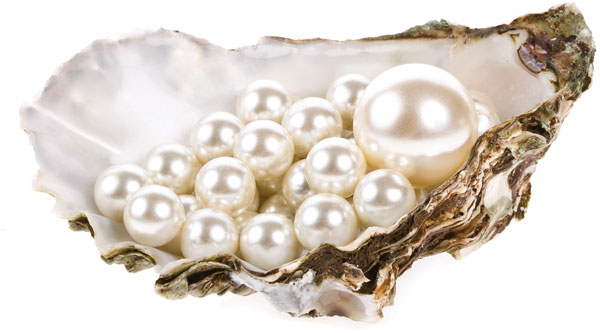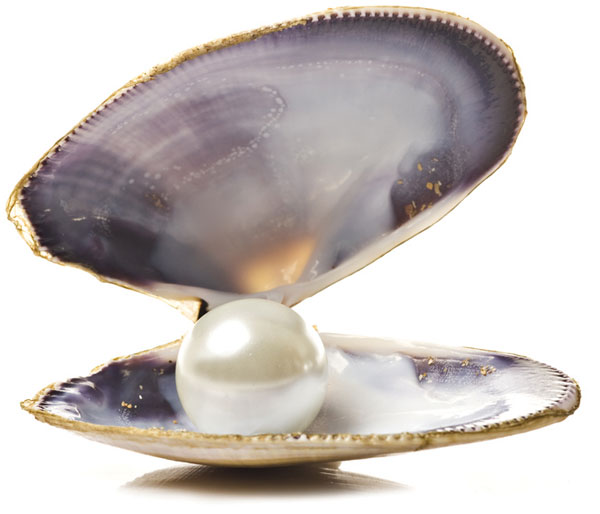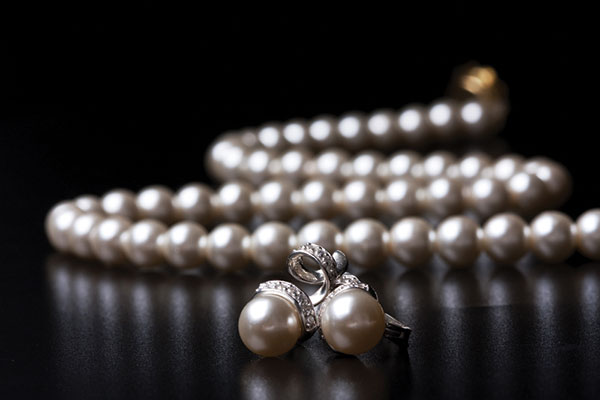0
Pearl Guide
Cultured Pearls
Cultured pearls come from seawater oysters, giant clams and giant conches.
They are formed when a mother of pearl bead is introduced into the oyster. This causes an irritation to the oyster and it coats the surface of the bead with nacre, a natural substance of calcium carbonate which crystallises into aragonite.

There are three main types of cultured pearl:
AKOYA PEARLS are the classic white pearl necklace we think of and typically have the highest lustre and greatest shine of all cultured pearls. Akoya pearls may also be treated to achieve a black body colour.
TAHITIAN PEARLS come from the warm waters of the South Seas and are grown in a BlackLipped oyster. They are the only pearl to achieve a black body colour naturally and are typically very large (9mm - 16mm). Tahitian Pearls are produced in colours such as aubergine purple, peacock green and greyish blue. These oysters can grow as large as 30cm and can weigh up to five kilograms.
SOUTH SEA PEARLS come from the world’s largest oysters and the colours are typically silver, white and golden yellow. These are farmed in Australia, Indonesia and the Philippines.
Freshwater Pearls
Created by the Chinese, the Japanese later developed the industry in the late 1890s. Freshwater pearls are generally produced by mussels, and are cultivated in Japan, China and the USA.
Freshwater pearls come in various pastel shades of white, black, pink, peach, lavender, plum, purple, and tangerine, depending on the type of mussel.
The typical size of freshwater pearls is 2mm - 16mm with 7mm - 8mm being the most common. They come in a variety of shapes including teardrop and oval.

Freshwater pearls are normally farmed in larger numbers, as the mussels are able to produce a greater number of pearls than the cultured pearl oysters.
The freshwater pearl will normally look irregular in comparison to the cultured pearl which looks more spherical in shape.
Caring & Looking After Pearls
Once you have chosen your pearls, you will naturally want to look after them so that they give you years of pleasure.
Here are our pearls of wisdom to ensure that your pearls remain safe and bright for years to come.
Things you can do with your pearls...
• Keep them clean and free from make up residue. Wipe your pearls with a soft, lint free cloth, a handkerchief for example. This will remove any acidic or alkaline influence on the pearls and will prevent surface damage.
• Keep them in a jewellery box or jewellery roll, out of direct sunlight when they are not being worn. Keep the pearls in separate compartments away from other jewellery, which could scratch the surface of your pearls.
• Have your pearls rethreaded regularly. Most pearls are threaded onto silk which will loosen over time.
Things we advise against with your pearls...
• Avoid spraying perfume or hairspray directly onto your pearls. Most perfumes contain alcohol which attacks the fragile surface of the pearl. Unlike gemstones, pearls can’t be polished, so once they are damaged there is nothing that can be done to restore their lustre.
• Avoid going swimming in your pearls. Chlorine in pools and jacuzzi’s can damage your pearls beyond repair.
Pearls - Nature’s Precious Gift
Pearls are the queen of gems, formed in shellfish, they are the most important of the ‘organic’ gem materials. Pearls even once reigned supreme over diamonds during the Edwardian period.

The finest quality natural pearls have been highly valued as objects of beauty for many centuries.
Pearls are traditionally associated with innocence but they are also perhaps the most sensual of
gems; they have been said to be the ‘tears of the gods’ !
Pearls vary in colour from subtle shades such as white, pink, silver, yellow, green, gold and bronze depending on the type of shellfish and the water.
A spherical pearl is the ideal, baroque or irregularly shaped pearls are also used for the more unusual pieces. Lustre, colour, shape and clarity are the considerations which determine the quality and value of a pearl.
Pearls are the birthstone for June and the traditional gift for 30th birthdays and other 30th anniversaries.
About Whibleys
Whibleys The Jewellers is an independent family run business, with our origins in Gracechurch Street London in 1894.
Contact Information
34 Warwick St, Worthing, West Sussex
Tel: 01903 234360
